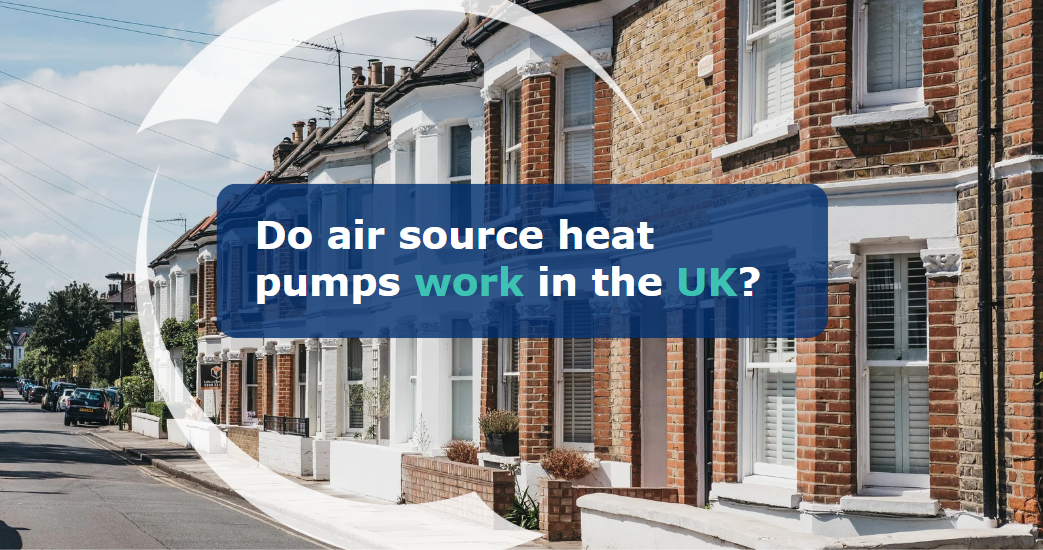Do air source heat pumps work in the UK?
If you’re looking into investing in an air source heat pump for your home, you’ll likely have seen that they work by extracting heat from the outside air and releasing that heat into your house –primarily through normal domestic radiators.
But if they extract heat from the outside air, how can they extract heat when there isn’t any in the outside air? After all, it doesn’t usually feel that hot in the UK!
While it doesn’t often feel like there’s enough heat in the air, appropriately-sized ASHP systems certainly do work in the UK.
Here’s why:
- It doesn’t need to be ‘hot’ for heat pumps to work
- Heat pumps can work down to really low temperatures
It doesn’t need to be ‘hot’ for heat pumps to work
It’s crucial to understand that the weather doesn’t need to be hot for air source heat pumps to work – the idea that they can only work in hot temperatures is a similar misconception to the idea that solar panels can only work when it’s really sunny.
Heat pumps work by absorbing energy from the air outside and converting it to heat your home. Refrigerant circulates through an evaporator whilst a fan draws outside air over the evaporator, absorbing energy. The absorbed energy causes the refrigerant to vaporise. This vaporised refrigerant is then compressed creating heat. Hot vapour passes through a condenser which then transfers the heat to your home’s water-based heating system, heating both your hot water and your radiators. The refrigerant is cooled and then expanded restarting the cycle.
This can be adjusted through pressure so that it is able to take on the difference in temperature all year round. The higher the outside air temperature, the more efficiently the heat pumps will be able to operate so the cost of hot water for taps, baths, and showers, ends up a lot cheaper during the warmer summer months!
If you’re curious about the technical details of how heat pumps work, read more about that here.

Performance in cold weather
Because they work using the temperature difference between the refrigerant and the ambient air, heat pumps can work down to really low temperatures.
Whilst an air source heat pump may be less efficient in cold weather it won’t be less effective. Most units are equipped to function efficiently even in temperatures as low as -15°C. It is important to ensure that the system is correctly designed and installed for your specific home requirements – this is why every heat pump installation is a bespoke solution.
Technically, heat pumps can work down to -28°C which is why they’re so popular in Scandinavia but MCS registered UK installations are sized to work efficiently based on the geographical location of your home here in the UK.
Because we only experience below-zero temperatures (at most) for a few days a year, installing a system that can operate efficiently at temperatures lower than MCS design temperatures adds significant cost and reduces efficiency over the rest of the year.
Crucially, your heat pump will still continue to work if we happen to get a sudden cold snap so you’re not going to be left without heating on the coldest day of the year – it just won’t be able to work as efficiently as it does over the rest of the year. In other words, it’ll use a bit more electricity than it usually does. Here are some winter tips below for you courtesy of our resident expert Jamie.
You’ll need space to put the heat pump
The only possible downside of getting an air source heat pump for a UK domestic property is that you’ll need adequate space – so air source heat pump’s (ASHP’s) aren’t always suitable for all properties.
If you have a garden or outside area, an existing hot water cylinder or space to fit one however, an air source heat pump could be a great investment for reliable, sustainable heating.



